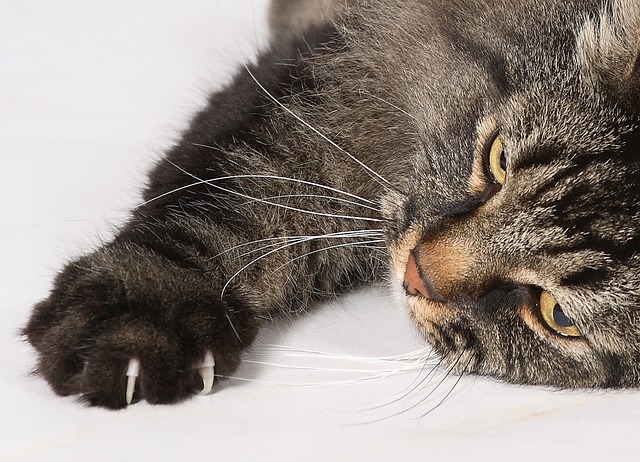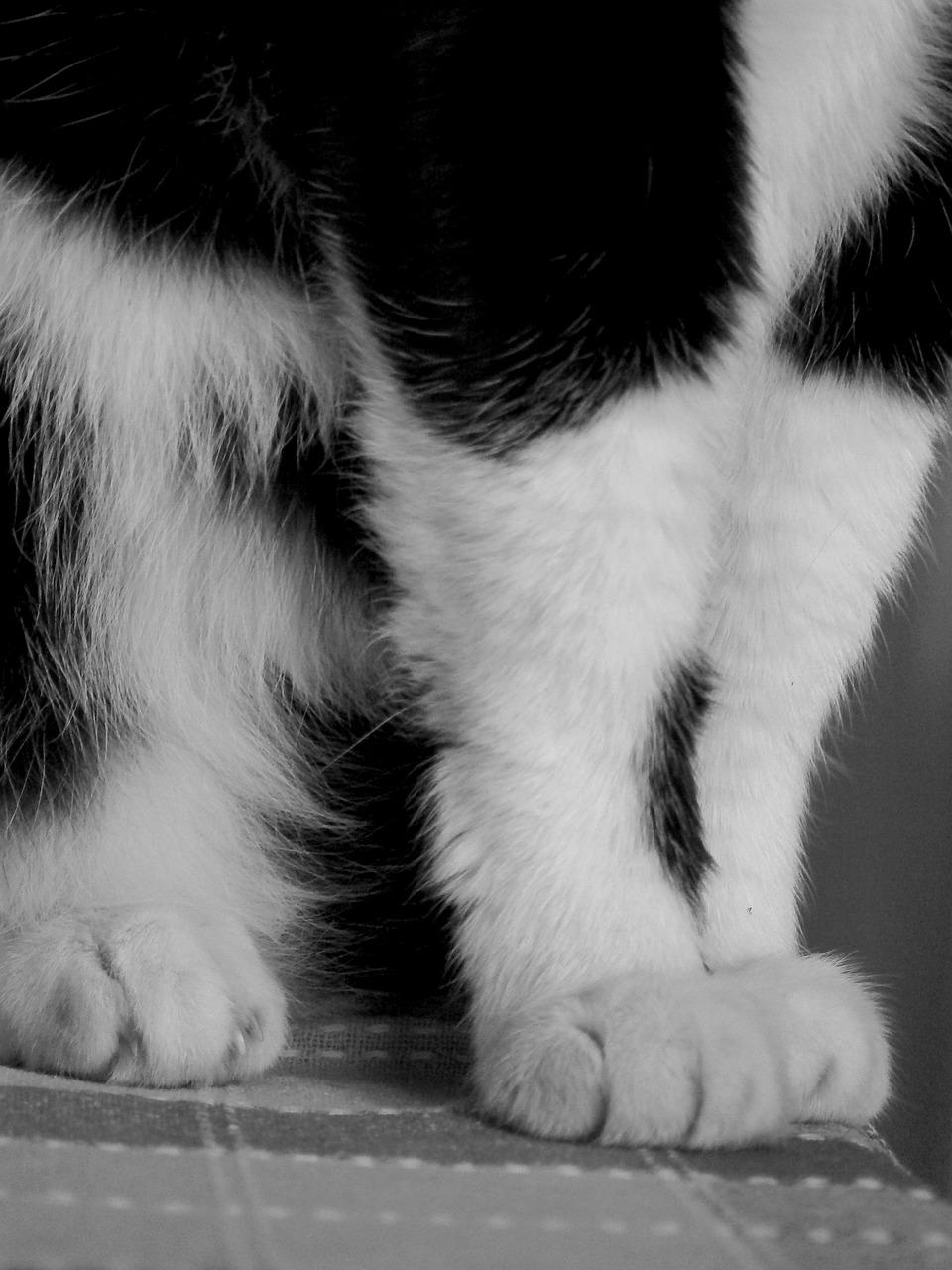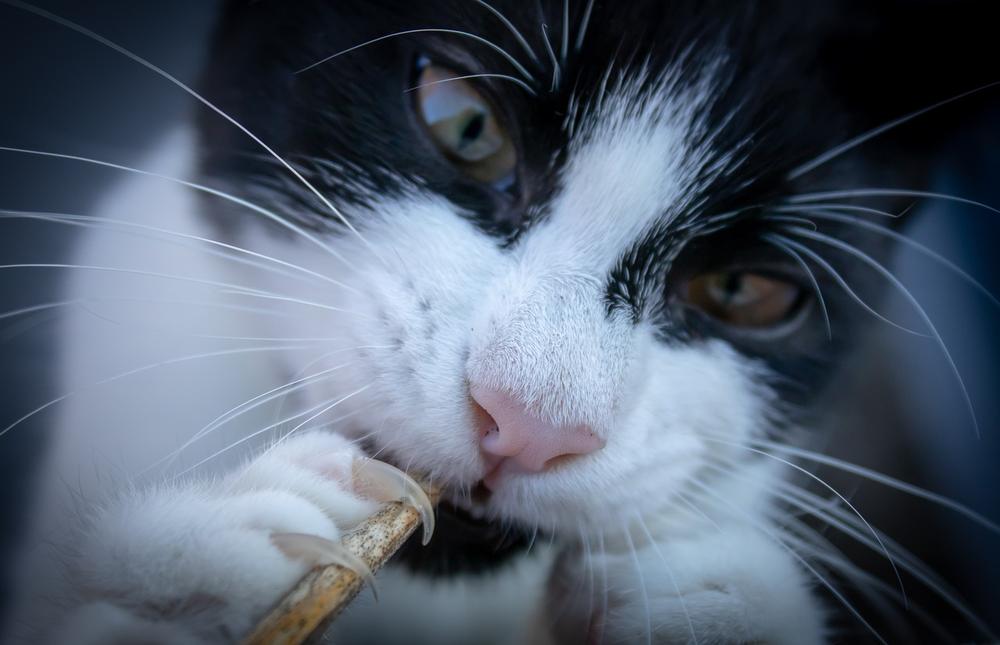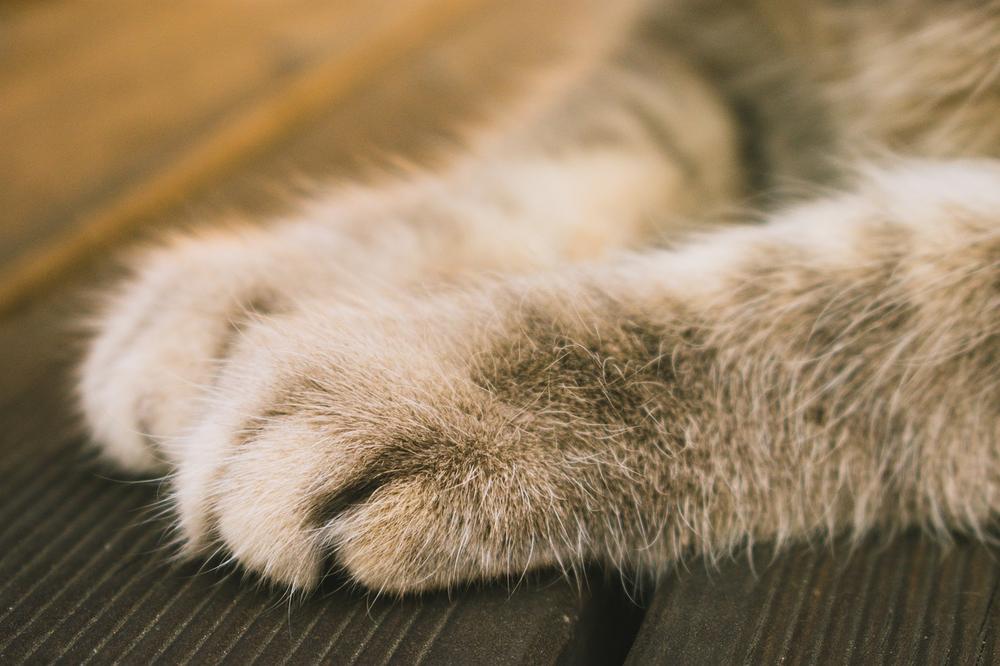Cat Claws Not Retracting: Everything You Should Know

Attention, cat lovers!
Are your feline friend's claws refusing to retract? 😿
Imagine this:
Your cat in constant pain, risking infection, and turning your cozy home into a battlefield.
It's time to take action!
In this I Care for Cats guide, I'll reveal all the answers.
Let's take charge now!
Causes of Why Is My Cat’s Claw Not Retracting
Sometimes, your furry friends have trouble retracting their claws.
And there can be many reasons for this.

Let me break it down for you:
- Allergies: Cats with inflamed or itchy paws may struggle to retract their claws.
- Disease and trauma: Factors like disease, trauma, infection, or old age can make claw retraction difficult.
- Age-related complications: As cats get older, their claws may become smoother and more fragile, causing discomfort.
- Genetic conditions and injuries: Genetic conditions, leg or paw injuries, or trauma can prevent claws from extending or retracting properly.
- Infections and medical conditions: Claws that don't retract could indicate bacterial, viral, or fungal infections. Medical issues such as arthritis, diabetes, kidney disease, or hyperthyroidism can also affect retraction.
- Neurological disorders: Certain neurological disorders can impact a cat's ability to retract its claws.
- Incorrect declawing surgeries: If a cat has had a poorly performed declawing surgery, it may struggle with retracting its claws.
- Behavioral factors: Insecurity and fear in kittens can also influence claw retraction and should be addressed by introducing them to pets properly.
If you notice that your cat's claws aren't retracting properly, you need to seek veterinary advice right away.
But if you're still wondering about another important aspect of cat care, have you ever asked yourself if a cat can live without whiskers?
In my blog post Cat Without Whiskers, I delve into the fascinating world of feline whiskers.
Treatments of Cat Claws Not Retracting
Treating Cat Claws Not Retracting
So, when your cat's claws aren't retracting properly, it can be pretty worrisome.
But hey, don't sweat it, I've got a few treatment options you can try to help with this issue.
Moisturizing Solutions for Hydration
First things first, let's talk about keeping those furry friend's paws hydrated and preventing dryness.
You know what works wonders?
Specialized cat paw balms or moisturizers...
They do the trick of maintaining proper claw retraction.
Trust me, give it a shot and see if it makes a difference for you and your cat.
Nail Care and Trimming
Now, in cases where those claws are stubbornly not retracting, some good nail care and trimming is in order.

Regular nail trimming is essential for preventing discomfort for your feline companion, as well as combating infections and furniture damage. But if the problem persists, why not pay a visit to a vet?
They might prescribe antibiotics or suggest further treatment.
Professional Veterinary Care
Alright, let's say we're dealing with something more than just regular nail care here.
If we're talking fractures, sprains, or nail disorders, it's time to seek professional veterinary care.
Your vet might recommend treatments like casting, anti-inflammatory medicines, or even exercises to help your beloved cat. Remember, it's best to avoid declawing as it could cause pain and negatively impact your cat's quality of life.
Instead, let's focus on correcting our cat's behavior through consistency, patience, playtime, and positive reinforcement.
This approach isn't just humane, it also promotes their well-being and ensures they live a happy and healthy life.
But what if I told you there's a simple way to train your cat to actually enjoy nail trimming?
Let me show you how with positive reinforcement techniques and proper trimming methods:
How to Trim Your Cat’s Nails
Trimming your cat's nails is an important part of their all in all health.
Positive reinforcement training is crucial in teaching your cat to associate nail trimming with positive experiences. By rewarding them after each session, you can encourage cooperation and reduce stress.
Learning the proper technique for clipping a cat's nails is essential to avoid causing pain. Only trim the end of the nail to prevent bleeding from the vein.
Regular nail trimming can help prevent the need for declawing and maintain claw health.
If you're unsure how to trim your cat's nails, ask a vet tech to demonstrate the correct method.
They'll be happy to show you!
Remember to exercise caution to avoid cutting into the quick, which contains blood vessels and nerves.
Don't rely solely on scratching posts; proper nail trimming is key.
So, take the time to trim your cat's nails regularly, using positive reinforcement and the right technique, for their in essence well-being. You'll both be happier! 😺
And here's the deal...
What if your cat's claw retraction issue isn't just a physical problem?
What if there are emotional factors at play?
In the next section, we'll explore how fear and aggression can influence a cat's ability to control their claws and discuss training methods to help them maintain healthy and sharp claws:
Can Cats Control Their Claws?
Cats can retract their claws, but it's not always under their control.
Emotions like fear or aggression can make them keep their claws out for defense.
To keep your cat’s claws in check and prevent scratches, give them scratching posts or mats.
With these outlets, they can exercise their claws and keep them sharp and healthy.
What’s even better is that you can teach them to retract their claws through play.
Get interactive toys and have regular play sessions.
Just avoid rough play with your hands and feet to discourage them from using their claws inappropriately.
You see, those claws are pretty sharp and can cause a lot of harm if not retracted properly.
They extend their claws during certain behaviors like fighting or scratching.
So, redirect those behaviors to designated scratching areas, like the post.
That way, you minimize potential damage or injury.
But here’s the thing, some cats may need more patient guidance to learn how to retract their claws, especially if they didn't learn it from their mom or other older cats.
Now, you might be wondering how cats are able to retract their claws and why it's important for them to do so.
Well, let's dive into the fascinating world of cat claws and explore their incredible adaptability and functionality.
Why Are Cat Claws Retractable in the First Place?
Efficient claws are crucial for cats in their everyday activities - climbing, balancing, and hunting. Made of keratin, cat claws possess a special talent - retracting into sheaths to preserve sharpness and prevent unnecessary wear.
Initially, kittens have extended claws, but they start retracting them at the tender age of four weeks.
However, cheetahs deviate from this norm as their claws cannot fully retract.
Cats employ their claws for various purposes like hunting, climbing, marking territory, and self-defense.
In their early stages, kittens keep their claws exposed until approximately four weeks old.

An interesting insight into our feline friends!
Now, before we wrap up, I want to share something important with you.
Throughout this section, we've discussed how cat claws retract and why they are crucial for various activities.
However, if you've noticed that your cat's whiskers are unusually short, it's natural to feel concerned as a cat owner.
That's why I highly recommend checking out an informative guide that I've written called Why Are My Cats Whiskers So Short.
In this article, I delve into the possible reasons for this peculiar occurrence and provide valuable insights that will satisfy your curiosity.
Trust me, it's a must-read for any worried cat parent like you.
Wrap-up
Key Takeaways:
- Various factors can cause claw retraction issues in cats, such as disease, trauma, infection, or old age.
- Older cats may experience discomfort and mobility difficulties due to smoother and more fragile claws.
- Genetic conditions, injuries, and trauma can result in difficulties extending or retracting claws.
- Seeking veterinary advice is essential, as cutting a cat's nails is not recommended.
- Claws not retracting may indicate infections or underlying medical conditions.
- Neurological disorders and incorrect declawing surgeries can impact claw retraction.
- Behavioral factors, such as insecurity and fear, can affect claw retraction in kittens.
- Regular nail trimming and proper care can prevent discomfort, infections, and furniture damage.
- Veterinary care may be necessary for further treatment, including antibiotics and anti-inflammatory medicines.
- Declawing is not recommended and alternatives like Soft Paws and Soft Claws can be used.
- Correcting a cat's behavior through consistency, patience, and positive reinforcement is important.
- Learn the proper technique of nail trimming to avoid pain and injury.
- Scratching posts and training through play can help maintain claw health.
- Cats use their claws for various purposes, including hunting, climbing, and self-defense.
- Kittens start retracting their claws at around four weeks old.
And that wraps up today's article.
If you wish to read more of my useful articles, I recommend you check out some of these: Why Is There a Black Spot on My Cats Nose, My Cat Is Not Eating Force Feeding Your Cat, Can I Use Baby Shampoo on My Cat, and Why Are My Cats Whiskers So Long
Talk soon,
-Sarah Davis